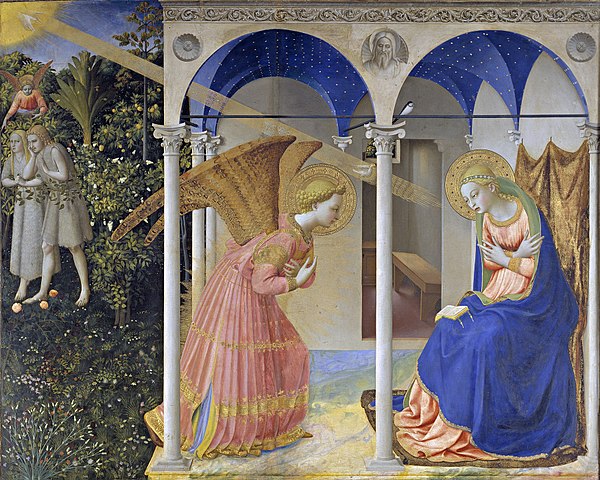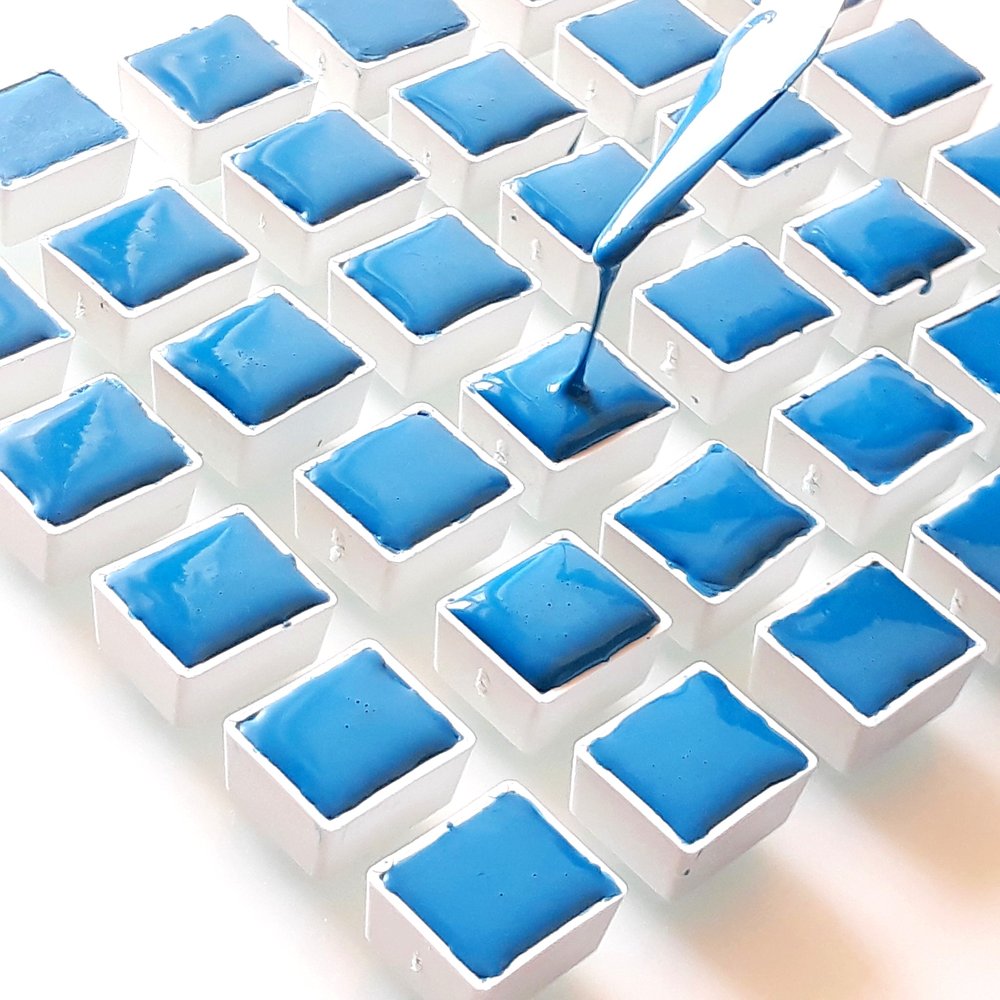PIGMENT SPOTLIGHTS
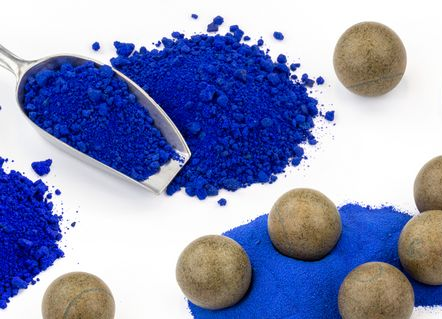
A. Gallo colors has been offering Yln Mn blue watercolor since 2021! It is available at our shop in full and half pans, as well as in our Signature collection palettes. We are so excited for everyone to try this pigment that we try to make it more accessible by subsidizing its high cost when purchased in the Signature palettes.
PIGMENT HIGHLIGHT: YIN MN BLUE
YInMn Blue is a vibrant and durable pigment discovered accidentally in 2009 by a team of scientists at Oregon State University led by Mas Subramanian and Andrew E. Smith, who was then a graduate student.
Its name comes from its unique chemical composition: yttrium (Y), indium (In), manganese (Mn), and oxygen (O). The pigment forms when these elements are heated to around 1,200 degrees Celsius, resulting in a brilliant blue color with a unique crystal structure that absorbs red and green wavelengths while reflecting blue.
YInMn is more environmentally friendly to produce than other blue pigments, and is less toxic than the cobalt-based blue pigments (Cobalt and Cerulean Blue). However, the pigment is very expensive. Its durability, resistance to fading, and environmentally friendly properties have gained attention across various industries.
In watercolor paint, YInMn Blue offers a luminous, intense blue hue with strong opacity and excellent lightfastness, meaning it won’t degrade over time when exposed to sunlight. The pigment’s unique vibrancy also allows for stunning gradations when diluted with water, giving artists greater versatility in their work.
YIn Mn has a modest tinting strength and this subtlety means that it fares well in a traditional palettes like this one proposed by Evie Hatch of Jackson’s art inspired by Rembrandt : YinMn Blue with Titanium White, Van Dyke Brown, Yellow Ochre, and Alizarin Crimson.
Shop Signature with YIn Mn blue →

Naturale I palette featured on Roman fresco detail, Villa di Livia, Prima Porta, circa 40-20 B.C, Museo Nazionale Romano, Palazzo Massimo alle Terme.
CONTEMPORARY APPROACH TO HISTORICAL COLOR
Before the Industrial Revolution, artists primarily relied on pigments derived from natural sources, including earth minerals and biological materials. These pigments were painstakingly harvested from various origins such as plant matter, semi-precious stones, insects, and mollusks. The vibrant colors produced from these materials were highly sought after, leading to their trade over long distances and across different cultures.
Our collection of handmade watercolors pays homage to this rich history by using premium pigments meticulously selected from both traditional and contemporary sources. By blending the old with the new, we aim to provide artists with a tangible connection to the materials that have inspired creativity throughout the centuries. Our selection includes historically significant pigments, allowing artists to explore the same raw materials used in antiquity and by the masters of art history.
Each pigment in our collection is chosen for its exceptional quality and historical relevance. We invite you to explore the timeless beauty and contemporary innovations within our range, and to experience the profound connection between the art of yesterday and creativity today.
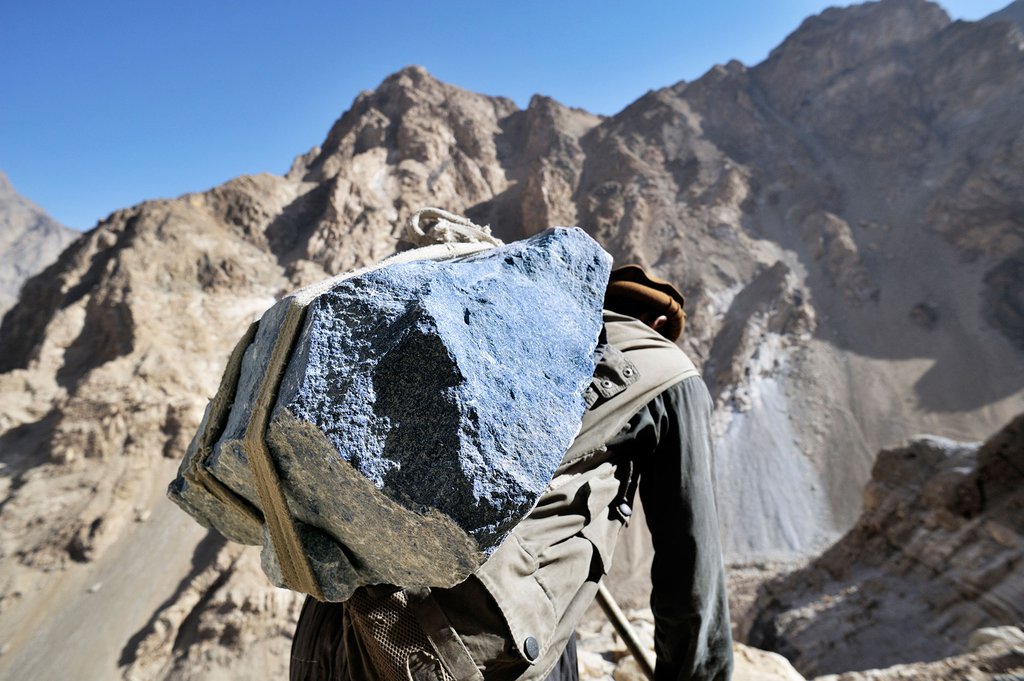
Lapis lazuli stone being carried by a miner in Afghanistan. Image by Philip Poupin.
LAPIS LAZULI
Ultramarine, derived from the Latin term "ultramarinus," meaning "beyond the sea," earned its name due to its importation into Europe from mines in Afghanistan and other parts of the Middle East by Italian traders during the 14th and 15th centuries. This exquisite pigment was originally produced by grinding the semi-precious stone lapis lazuli into a fine powder and then transforming it into paint. The meticulous process of creating this vibrant blue was documented by the Italian painter Cennino Cennini (1360-1427) in his seminal work, *Il libro dell'arte*, which remains available today in translation.
Renowned as the finest and most expensive blue of the Renaissance, ultramarine was a symbol of wealth and artistic excellence. Its brilliance and rarity made it the preferred choice for depicting the robes of the Virgin Mary, imbuing artworks with a sense of holiness and reverence. The high cost of ultramarine, derived from the labor-intensive extraction and preparation of lapis lazuli, ensured its status as a luxury item in the artist's palette.
This exclusivity persisted until 1826, when a synthetic version of ultramarine was developed, dramatically reducing its cost and making it more accessible. The advent of synthetic ultramarine allowed a broader range of artists to incorporate this once-rare pigment into their works, continuing its legacy in the art world.
Ultramarine was the finest and most expensive blue used by Renaissance painters. It was often used for the robes of the Virgin Mary, symbolizing holiness. It remained an extremely expensive pigment until a synthetic ultramarine was invented in 1826.
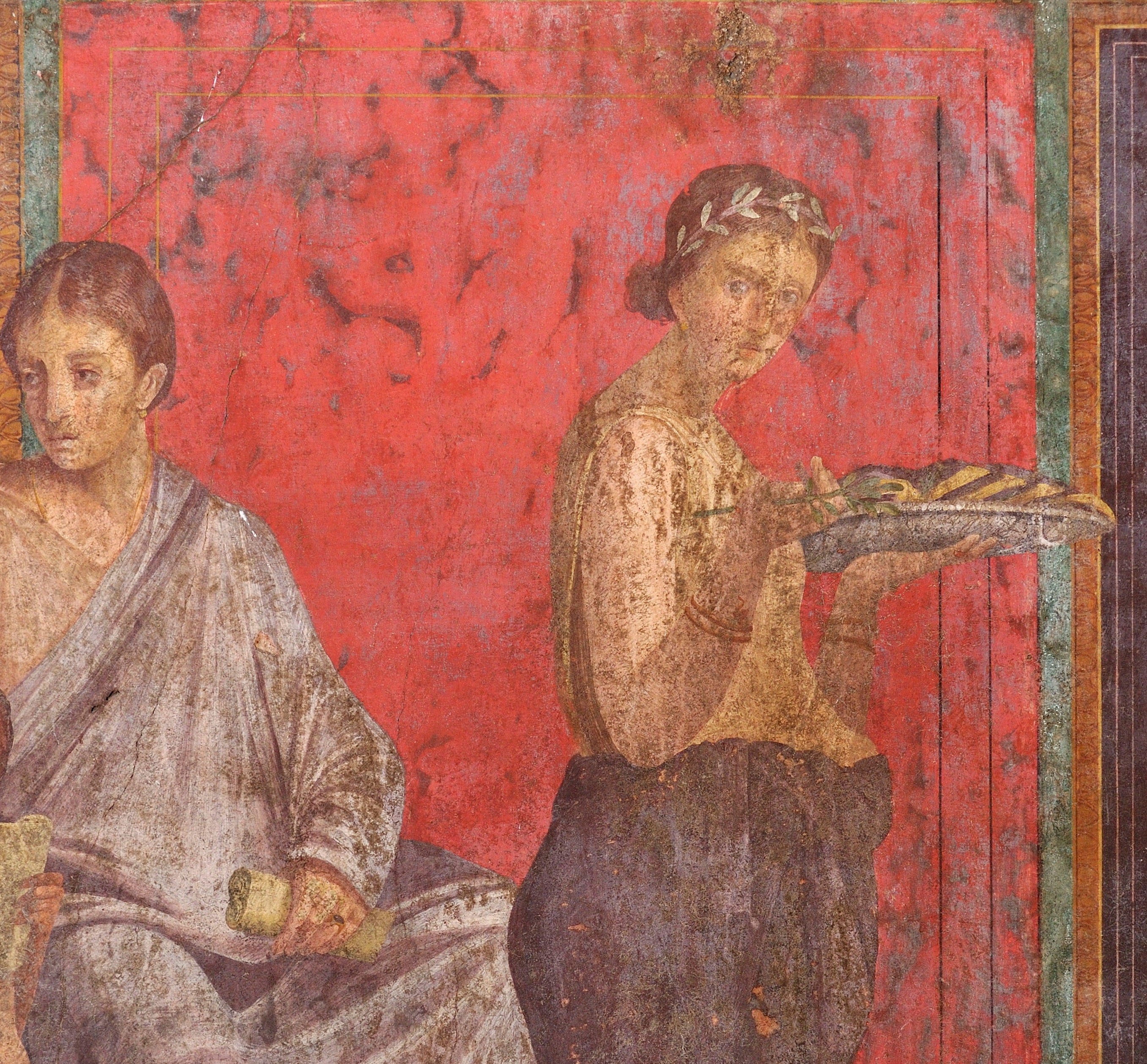
The Villa of Mysteries, like the rest of the Roman city of Pompei, was buried in the eruption of Mount Vesuvius in 79 AD and excavated from 1909 onwards.
VERMILION
Vermilion, a vibrant red pigment, has a storied history and significant role in art across various cultures. Made from cinnabar, a naturally occurring mercuric sulfide, vermilion has been used since ancient times. The Romans utilized vermilion extensively in their fresco paintings, where it was often employed to create striking red hues in murals and decorative art. In China, it was highly valued in art and calligraphy, symbolizing life and eternity. The pigment made its way to Europe through trade routes, becoming a staple in medieval and Renaissance paintings. Its vivid red hue was prized for its intensity and was often used to depict robes, religious iconography, and important figures.
The toxicity of vermilion pigment is due to its mercury content. We have developed a safer alternative utilizing a mineral base of agate peach quartz maintains the exquisite qualities of the historic cinnabar and is mercury free!
Shop Cinabro hue →

Detail from The Seduction of Yusef and Zuleykha C. 1488 by Kamal ud-din Behzad
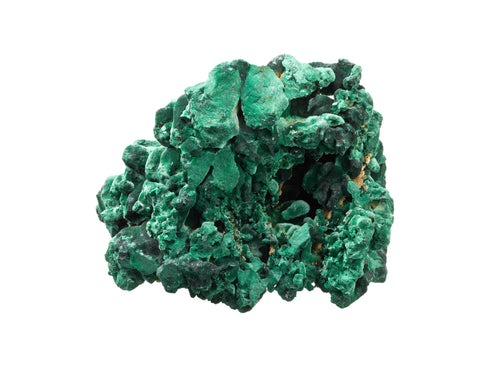
MALACHITE
Malachite pigment, known for its vibrant green hue, has a rich history and diverse uses in art that date back thousands of years. Derived from the mineral malachite, a copper carbonate hydroxide, this pigment was extensively used in ancient Egyptian art, where it adorned tombs, statues, and artifacts with its striking color. During the Renaissance, malachite's intense green was highly prized and featured prominently in frescoes, illuminated manuscripts, and panel paintings. Artists appreciated its opacity and the unique granular texture it imparted, which added depth and dimension to their works.
Despite its prized qualities, malachite is sensitive to acids and high humidity, which can cause it to degrade over time. Malachite also contains copper carbonate hydroxide, which is toxic if ingested or inhaled in significant quantities.
We have developed a beautiful copper free hue of this historic green by using an Enogu mineral base of Amazonite.

ROSE MADDER
Rose madder is a historically significant pigment renowned for its beautiful, transparent pink to red hues, derived from the roots of the madder plant, Rubia tinctorum. Used since antiquity, it became particularly popular during the Renaissance and 19th century. Ancient Egyptians and Greeks utilized madder for dyeing textiles, but its transformation into a fine art pigment involved more sophisticated methods. The pigment production process, known as "lake making," involved extracting the colorant alizarin from the madder roots using an alkaline solution, then precipitating it onto an inert substrate like alum to create a stable pigment. Rose madder was prized by artists for its delicate, warm tones and was extensively used in watercolors, oil paintings, and miniatures. Notably, it was favored by the Pre-Raphaelites for its luminosity and ability to create rich, glowing skin tones. Despite its tendency to fade over time when exposed to light, rose madder remains appreciated for its historical and aesthetic value, continuing to be used by conservators and artists seeking to replicate traditional palettes.
Shop Rose madder →
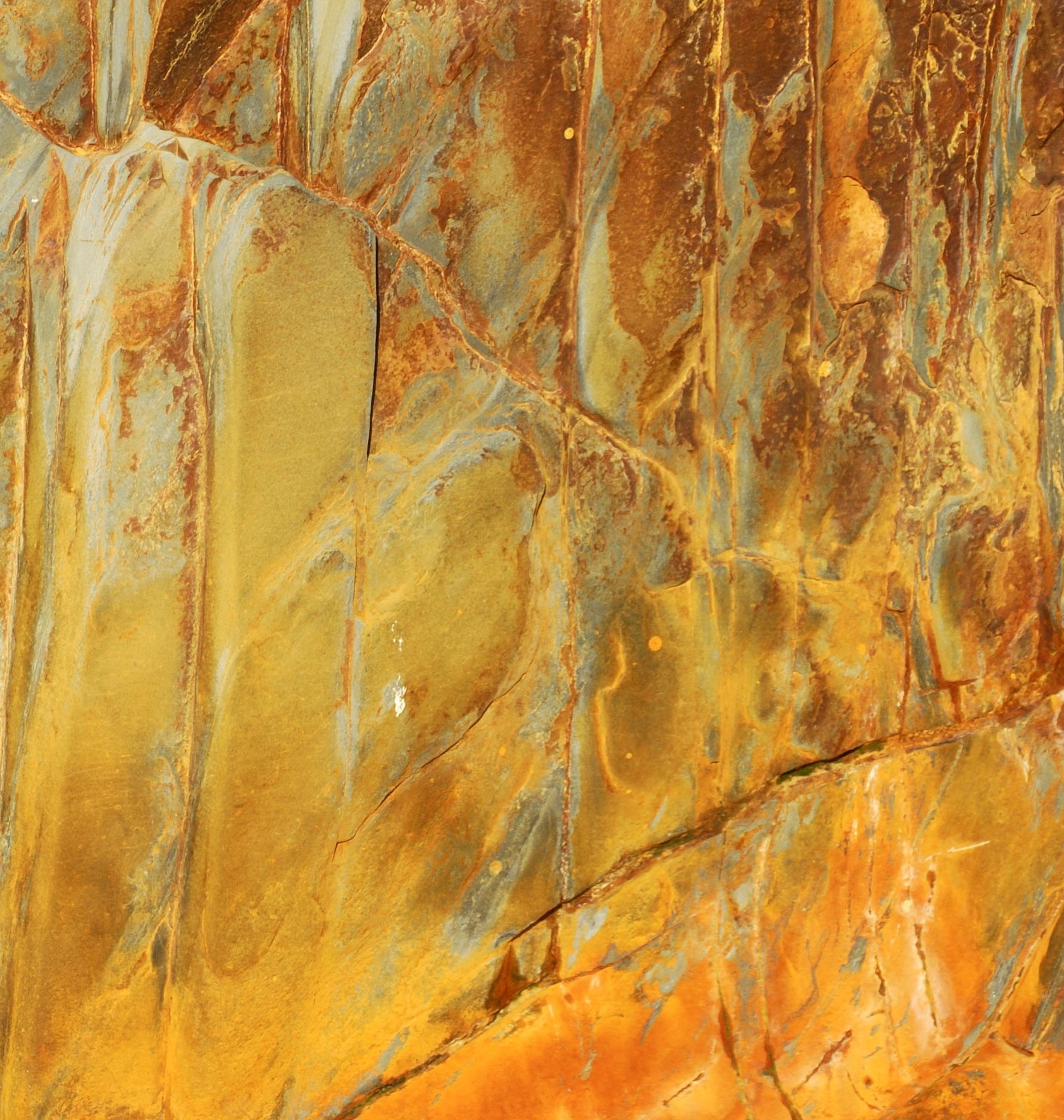
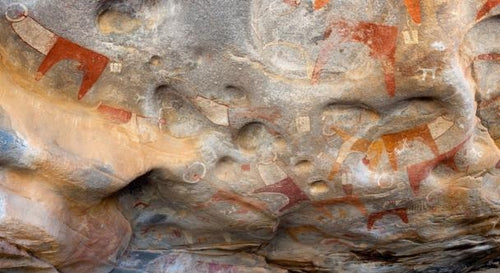
OCHRE
Ochre is a naturally occurring earth pigment found globally, consisting of a mixture of iron oxide, clay, and silica. The color variations in ochre are due to differing iron compounds. Yellow ochre, for example, owes its distinctive hue to the presence of the iron oxyhydroxide mineral, goethite. Conversely, red ochre derives its rich, reddish tones from hematite, a dehydrated form of iron oxide.
Ochres are among the earliest pigments utilized by humans, with evidence of their use found in prehistoric cave paintings that date back tens of thousands of years. Notable examples include the cave paintings in Lascaux, France, and the rock art of Australia, where ochre pigments have remarkably withstood the test of time. Pictured here are 12,000-year-old paintings of cows in caves in Laas Geel, Somalia.
One of the key attributes of ochre is its exceptional stability. Ochre remains completely lightfast, preserving its vibrant color indefinitely when applied to various mediums. Today, ochre continues to be an essential family of pigments, important to artists for their rich, earthy tones and ability to provide a connection to the ancient traditions.
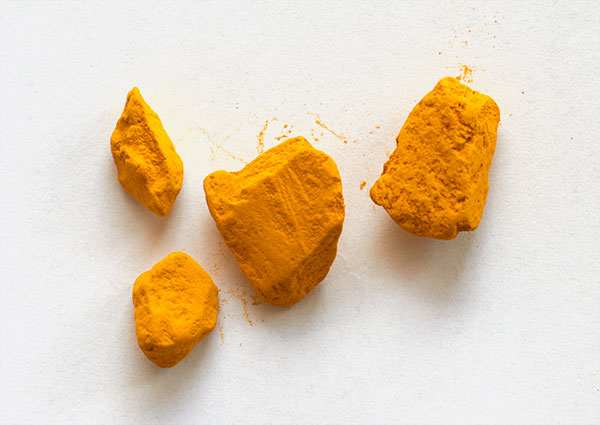
INDIAN YELLOW
Indian yellow, magnesium euxanthate, is said to have been manufactured in rural India from the urine of cattle fed only on mango leaves and water. The process is now considered inhumane and is no longer manufactured. In her book Color: A Natural History of the Palette, Victoria Finlay recounts her search in India to find the original villages where this color was made. While the exact location and original production method remain a mystery, her book is fascinating and worth a read.
Now available in full pan size, our Indian yellow is a clear, deep and luminescent orange-yellow. A modern alternative to traditional Indian yellow.
Shop Indian yellow →


